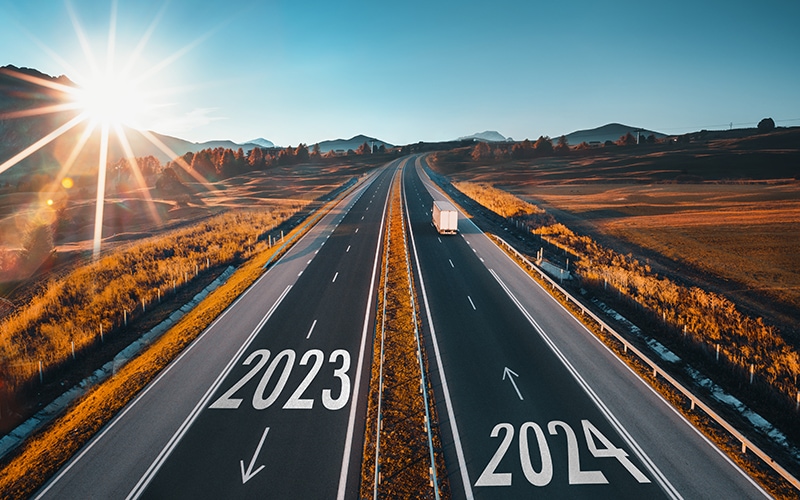The Future of Freight: What to Expect

The next few years will bring further disruptions to a freight model that the industry spent decades optimizing. In 2024 and beyond, new consumer demands, technological advancements, and broader changes like nearshoring will present new opportunities for logistics leaders from first to final mile.
Today’s freight chain model requires more fulfillment centers and a constant rebalancing of inventory further upstream in the supply chain, with more freight touch points and increased logistics complexity.
In response, more freight companies are turning to fulfillment centers, trailer pools, and drop-and-hook equipment capabilities to keep drivers—and their goods—constantly moving. With a limited supply of drivers, customers can’t afford for those drivers to be waiting.
Having trailer pools loaded and ready to go can reduce driver inefficiencies and optimize limited dock doors and warehouse staff to keep fulfillment centers running.
I see 2024 as a year of reimagining a more efficient, resilient and responsive supply chain. Three areas stand out.
1. Nearshoring. With continued geopolitical instability around the world, more investments are happening in manufacturing in the United States and Mexico. The nearshoring trend could expand even further into regionalized manufacturing, resulting in more demand for trucks, trailers, and equipment domestically.
2. Electrification. Now that light-duty electric freight vehicles are on the market, we expect further electrification or another anti-emissions technology for commercial trucks within the next five years.
This innovation presents challenges. If today’s diesel tractors were replaced with much heavier electric trucks, one-third of the truckload sector would be too heavy for U.S. roads, according to the American Transportation Road Institute.
OEMs today recognize extreme lightweighting will become necessary to facilitate this transition and maintain similar levels of freight on trucks.
Electrification will also impact cold air management, currently powered by diesel fuel. Swapping out these systems for an electric motor would make the vehicle heavier. Lighter and more thermally efficient materials will be necessary to adopt electrification for transporting food and pharmaceuticals.
3. Autonomous freight. We expect adoption of autonomous trucking in the next 10 years, especially for long distances through middle America. The first major use could be in dedicated routes from “drop zones.”
Imagine: an autonomous truck grabs a trailer from an AV drop zone on the West Coast and hauls it east to the Midwest. Then, that autonomous truck drops the trailer at another AV landing pad, right off the highway, where a driver from Kentucky picks up the trailer, then navigates the tricky urban interchanges and ultimately delivers it to its final destination. These advancements could help ease driver shortage concerns, reduce inefficiencies, and eliminate empty miles.
As these macro trends unfold, a unifying thread emerges: a profound shift in the movement of freight across North America. Nearshoring will disperse freight origins beyond traditional port cities. The rise of electric vehicles is anticipated to concentrate freight flow around well-equipped infrastructure and the emergence of autonomous vehicles promises fundamental alterations in freight transportation.
This transformative landscape not only requires more equipment, but also equipment that is lighter, more thermally efficient and more intricately connected than ever.

